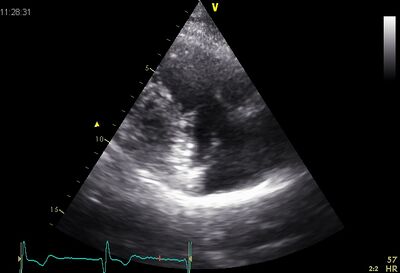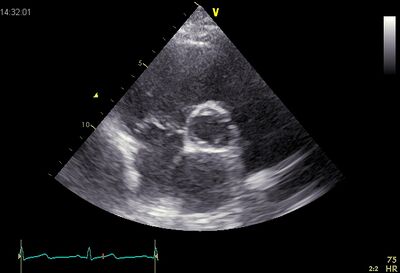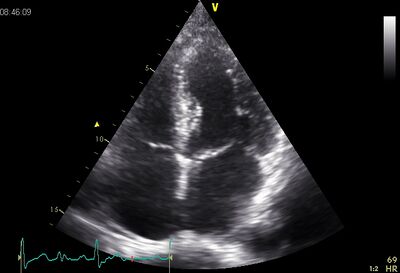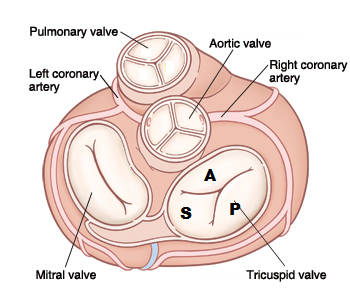Tricuspid
Jump to navigation
Jump to search
Anatomy
The tricuspid valve, ensures that there is no backflow of blood from the right ventricle to the right atrium. The tricuspid valve is like the Latin name indicates consists of three leaflets: the septal (S), the anterior (A) and posterior (P) leaflet, whose anterior leaflet is the largest. The tricuspid valve, distinguishes itself not only by the number of valve leaflets of the mitral valve, but also by the manner of attachment. The chordae of the mitral valve attached to two papillary cups which the tricuspid valve attached to a lot more muscular and cups directly to the septum. The valve is located slightly to the apex than the mitral valve.
Echocardiographic views

|

|
| Plax by tilted | PSax Ao |
|---|---|

|

|
| AP4CH | Subcostal |
Click here to calculate MVA by PHT
References
<biblio>
- 1 pmid=20435783
- 2 pmid=3190958
</biblio>
